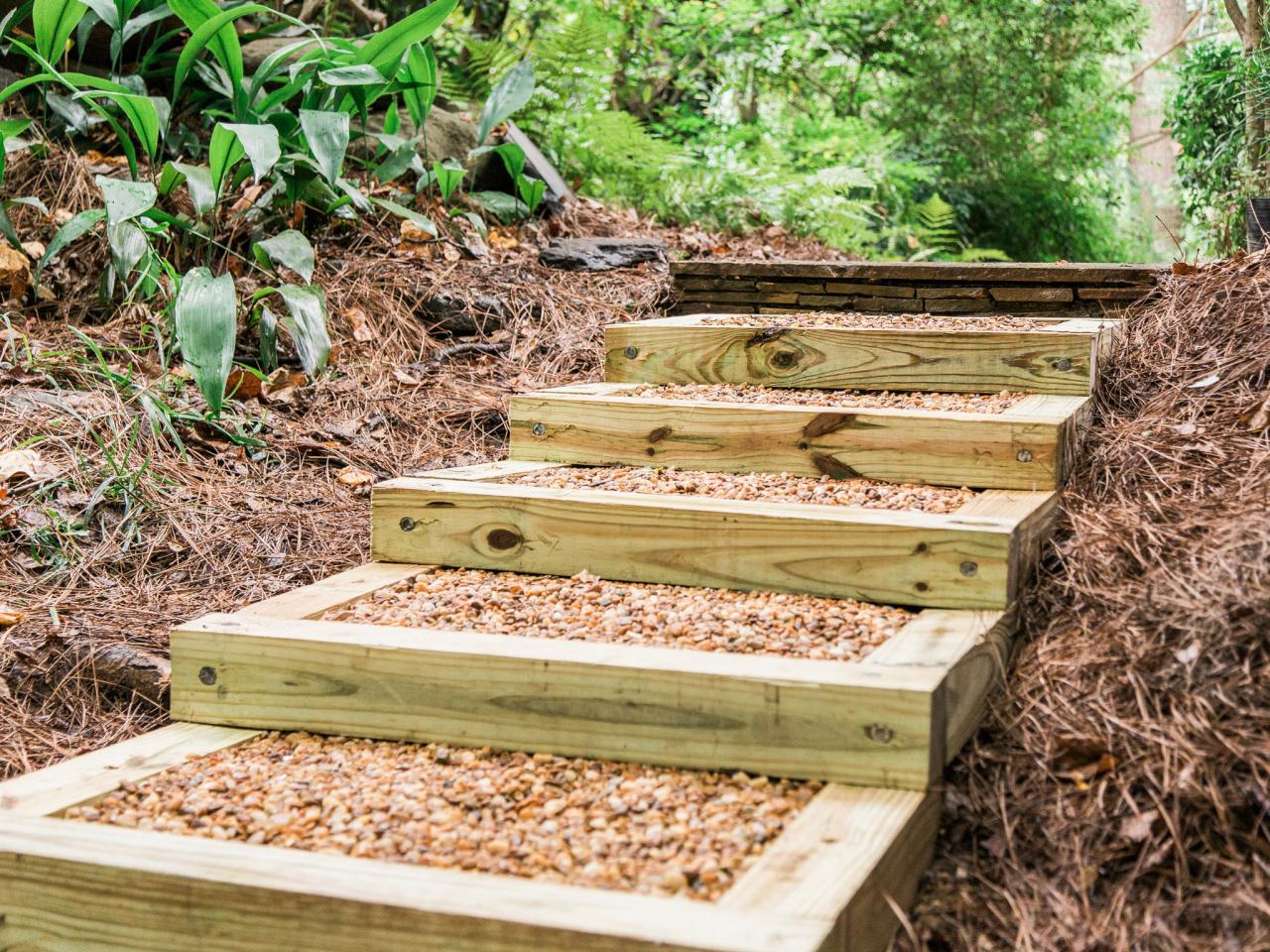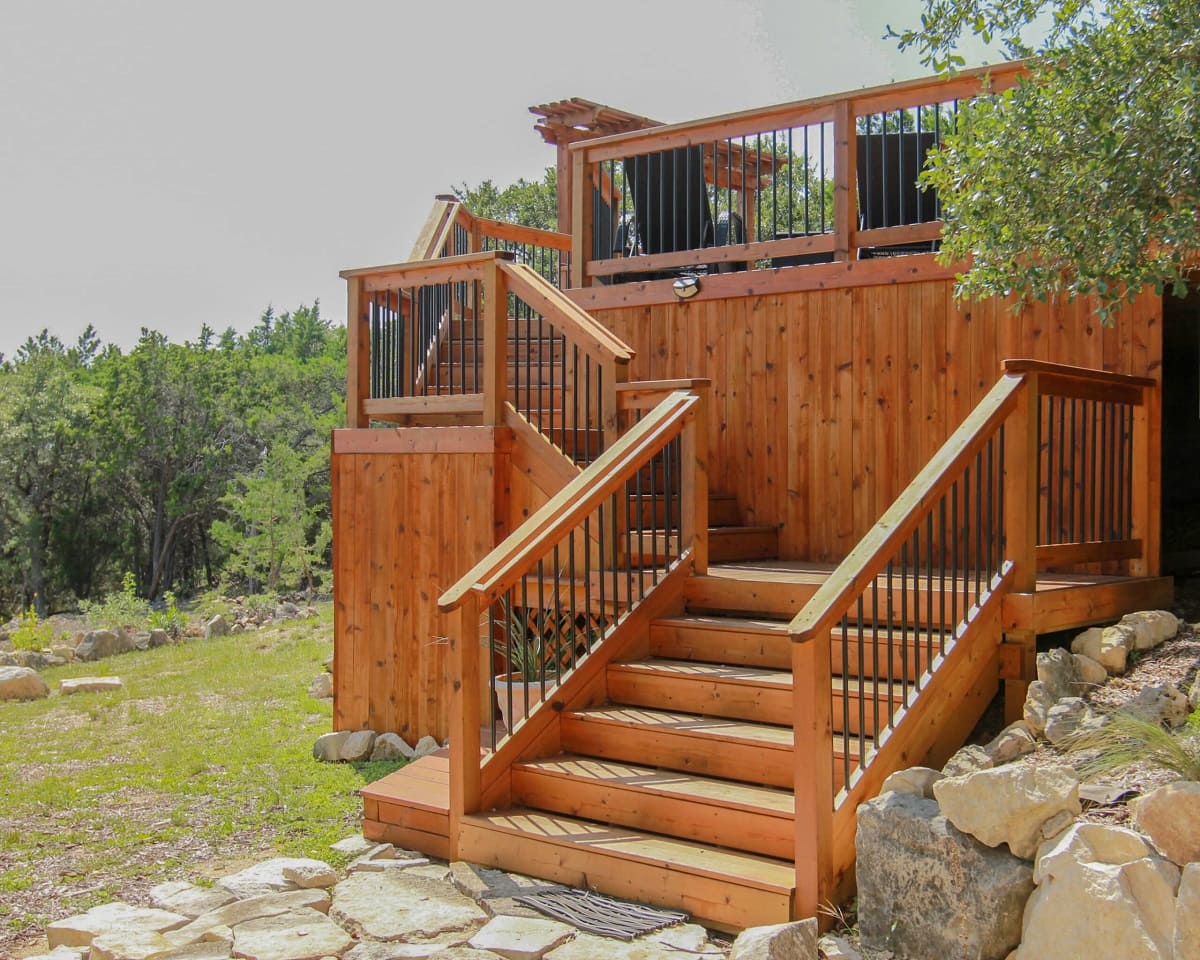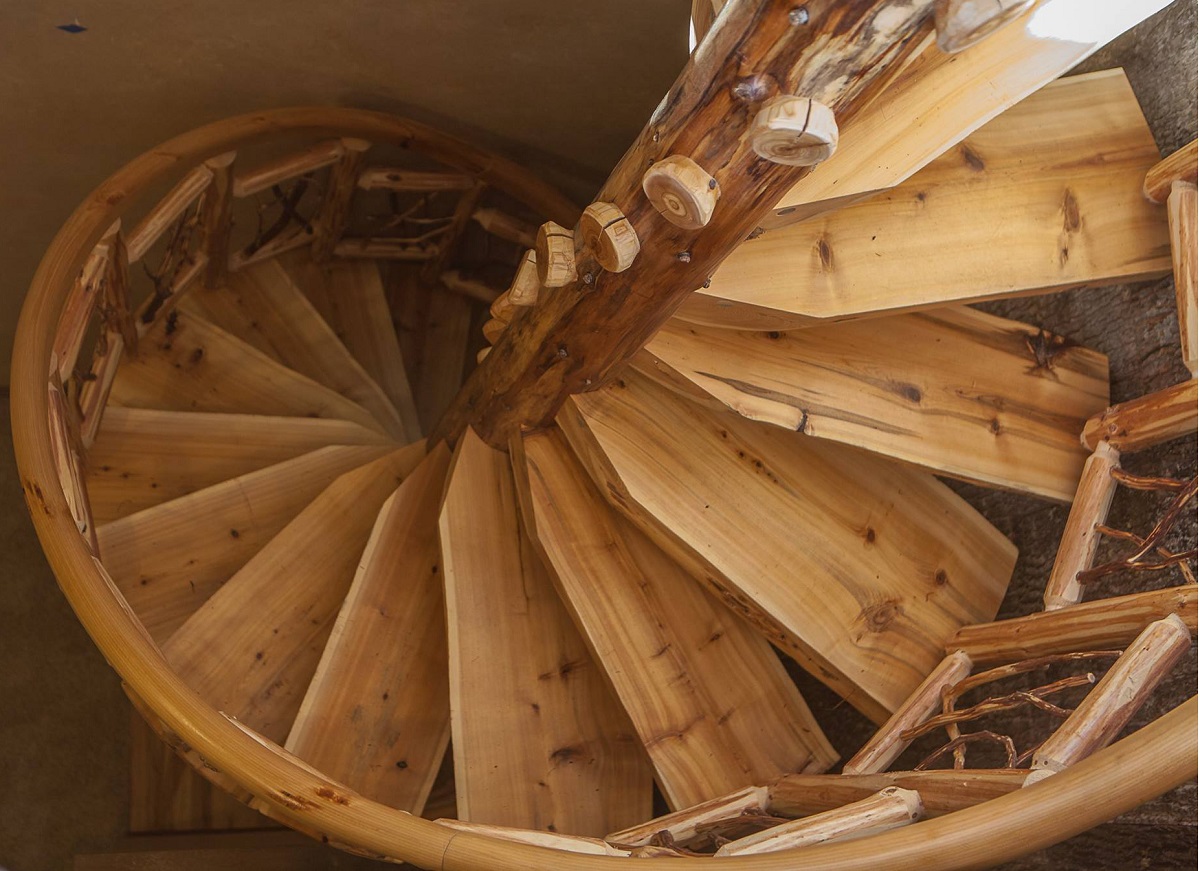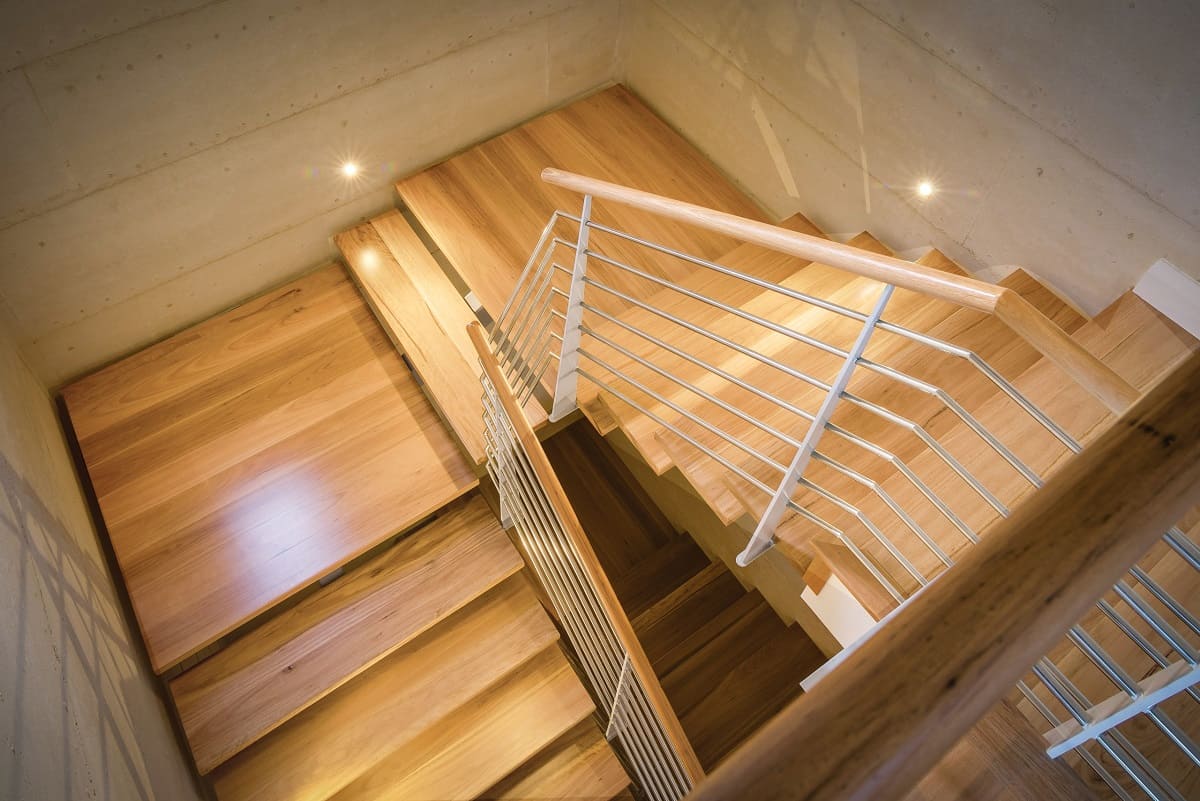Home>Furniture & Design>Outdoor Furniture>How To Build Outdoor Stairs On A Hill


Outdoor Furniture
How To Build Outdoor Stairs On A Hill
Published: January 12, 2024
Learn how to build outdoor stairs on a hill with our expert tips and guidance. Create a safe and stylish outdoor space with our outdoor furniture and design ideas.
(Many of the links in this article redirect to a specific reviewed product. Your purchase of these products through affiliate links helps to generate commission for Storables.com, at no extra cost. Learn more)
Introduction
Welcome to the world of outdoor design and construction! Building outdoor stairs on a hill can be an exciting and rewarding project that not only enhances the aesthetic appeal of your outdoor space but also provides functional accessibility to different levels of your property. Whether you're a seasoned DIY enthusiast or a homeowner looking to embark on your first outdoor construction project, this comprehensive guide will walk you through the process of building sturdy and visually appealing outdoor stairs on a sloped terrain.
The prospect of transforming an uneven landscape into a harmonious blend of nature and architecture is both challenging and fulfilling. By understanding the fundamental principles of site assessment, material selection, and construction techniques, you can embark on this endeavor with confidence. From gathering the necessary tools and materials to the final touches that elevate the visual appeal and safety of your stairs, every step in this guide is designed to equip you with the knowledge and skills needed to bring your vision to life.
Throughout this guide, we'll explore the essential steps and considerations involved in constructing outdoor stairs on a hill. You'll learn about the crucial aspects of assessing the site, planning and designing the stairs, excavating the area, building a solid foundation, constructing the steps, and adding handrails and finishing touches. By the end of this journey, you'll not only have a set of functional and visually appealing outdoor stairs but also a deeper understanding of the intricate art of outdoor construction and design.
So, roll up your sleeves, put on your work boots, and get ready to embark on a rewarding journey of transforming your outdoor space. Whether you're looking to connect different levels of your garden, create access to a hillside retreat, or simply add a touch of elegance to your landscape, this guide will be your trusted companion throughout the exhilarating process of building outdoor stairs on a hill. Let's dive in and explore the art and science of outdoor construction, one step at a time.
Key Takeaways:
- Building outdoor stairs on a hill requires careful site assessment, sturdy materials, and thoughtful design to create a functional and visually appealing structure that harmonizes with the natural landscape.
- From excavation to finishing touches, constructing outdoor stairs involves precision, safety considerations, and integration with the surroundings, resulting in a captivating and enduring addition to the outdoor space.
Read more: How To Build Stairs Into A Hill
Assessing the Site
Before you embark on the construction of outdoor stairs on a hill, it’s crucial to conduct a thorough assessment of the site. This initial step sets the foundation for a successful and well-executed project. Start by surveying the terrain to identify the slope, soil composition, and any existing landscaping features that may influence the design and placement of the stairs.
Assess the natural contours of the hillside, taking note of any irregularities or variations in the slope. Understanding the topography will help you determine the most suitable location for the stairs and the optimal design to complement the landscape. Additionally, consider the drainage patterns and water runoff to ensure that the stairs are positioned to minimize erosion and maintain stability over time.
Another critical aspect of site assessment is evaluating the soil composition. Different soil types, such as clay, loam, or sandy soil, have varying levels of stability and drainage. Assessing the soil will guide your choice of foundation materials and construction techniques to ensure the long-term durability of the stairs.
Furthermore, take into account any existing vegetation, trees, or landscaping elements that may impact the layout and construction of the stairs. Preservation of natural features and integration of the stairs with the surrounding environment can contribute to a harmonious and visually appealing outcome.
Lastly, consider the intended use and traffic flow around the stairs. Whether the stairs will serve as a primary access point to a garden, a scenic pathway, or a functional connection between different outdoor spaces, understanding the user dynamics will influence the design and dimensions of the stairs.
By meticulously assessing the site, you’ll gain valuable insights that inform the subsequent stages of planning, design, and construction. This foundational understanding of the terrain and environmental factors sets the stage for a well-crafted and seamlessly integrated set of outdoor stairs that harmonize with the natural beauty of the hillside.
Gathering Materials and Tools
Once you’ve assessed the site and gained a comprehensive understanding of the terrain, it’s time to gather the materials and tools necessary for building outdoor stairs on a hill. From sturdy construction materials to specialized tools, the following list will equip you for the task at hand:
Materials:
- Lumber: Select pressure-treated or rot-resistant lumber for the structural components of the stairs, such as stringers, treads, and risers. The choice of wood should prioritize durability and resistance to outdoor elements.
- Gravel and Aggregate: Utilize gravel and aggregate for creating a stable and well-draining base for the stairs. These materials provide essential support and help prevent shifting or settling over time.
- Concrete: Depending on the design and foundation requirements, concrete may be needed for securing the base of the stairs and providing stability on the hillside.
- Fasteners: Stock up on galvanized or stainless steel screws, nails, and anchors to secure the structural elements of the stairs and withstand outdoor exposure.
- Handrail Components: If your design includes handrails, gather the necessary components such as balusters, handrail sections, and mounting hardware.
- Finishing Materials: Consider the finishing touches, including paint, stain, or sealant, to protect the wood and enhance the visual appeal of the stairs.
Tools:
- Measuring and Marking Tools: Ensure you have a tape measure, carpenter's square, and chalk line for accurate measurements and layout marking.
- Cutting Tools: A circular saw or miter saw will be essential for cutting lumber to the required dimensions, while a jigsaw may be needed for intricate cuts.
- Excavation Tools: Shovels, a digging bar, and a mattock will facilitate the excavation of the stair area and the preparation of the foundation.
- Level and Plumb Line: These tools are indispensable for ensuring the levelness and alignment of the stairs during construction.
- Concrete Mixing Tools: If concrete is part of the construction, prepare a wheelbarrow, hoe, and trowel for mixing and placing the concrete.
- Safety Gear: Prioritize safety with protective gear, including gloves, safety glasses, and hearing protection, especially when working with power tools and heavy materials.
By gathering the right materials and tools, you’ll set the stage for a smooth and efficient construction process. With careful preparation and attention to detail, you’ll be ready to bring your outdoor stair project to life, one step at a time.
Read more: How To Build Outdoor Railing For Stairs
Planning and Designing the Stairs
When it comes to building outdoor stairs on a hill, meticulous planning and thoughtful design are essential for creating a structure that seamlessly integrates with the natural landscape while prioritizing safety and functionality. The following considerations will guide you through the planning and design phase, ensuring that your outdoor stairs are not only visually appealing but also structurally sound:
Compliance and Regulations:
Before diving into the design, familiarize yourself with local building codes and regulations pertaining to outdoor stairs. These guidelines often dictate the dimensions, materials, and safety features required for outdoor stair construction, ensuring compliance with relevant standards.
Layout and Dimensions:
Begin by determining the optimal location and layout of the stairs based on the site assessment. Consider factors such as the natural contours of the hillside, existing landscaping features, and the desired flow of traffic. Pay close attention to the dimensions of each step, ensuring uniformity and comfortable usability for individuals of all ages and abilities.
Material Selection:
Choose high-quality, weather-resistant materials that align with the aesthetic and functional requirements of the outdoor space. Whether opting for natural wood for a rustic charm or durable composite materials for low maintenance, the choice of materials should harmonize with the surrounding environment and withstand outdoor exposure.
Read more: How To Build A Railing For Stairs Outdoors
Safety Features:
Integrate essential safety features into the design, such as handrails and non-slip treads, to enhance stability and provide support for users navigating the stairs. The design should prioritize user safety without compromising the visual appeal of the structure.
Aesthetics and Integration:
Embrace the natural beauty of the hillside by designing stairs that seamlessly integrate with the surrounding landscape. Consider incorporating natural elements, such as stone accents or landscaping features, to blend the stairs with the environment and create a visually striking focal point.
Accessibility and Inclusivity:
Ensure that the design caters to accessibility needs, offering a user-friendly experience for individuals with varying mobility levels. Thoughtful design elements, such as gentle slopes, ample landing areas, and clear visibility, contribute to an inclusive and welcoming stairway.
By meticulously planning and designing the outdoor stairs, you’ll lay the groundwork for a construction process that embodies both functionality and aesthetic appeal. With a clear vision and attention to detail, your outdoor stairs will not only provide seamless access to different levels of the hillside but also enrich the outdoor space with timeless elegance and practicality.
Excavating the Area
As you transition from the planning phase to the physical construction of outdoor stairs on a hill, the process of excavating the area plays a pivotal role in preparing the foundation for the structure. This crucial step involves careful excavation and site preparation to create a stable and level base for the stairs. Here’s a comprehensive guide to navigating the excavation process with precision and efficiency:
Read more: How To Build Brick Steps On A Hill
Marking the Layout:
Begin by marking the layout of the stairs on the hillside using stakes, string lines, or spray paint. This visual guide will outline the precise location and dimensions of the stairs, serving as a reference point during excavation.
Clearing Debris and Vegetation:
Remove any debris, rocks, and vegetation from the designated stair area to create a clean and accessible workspace. Clearing the site of obstructions ensures a smooth excavation process and facilitates the establishment of a solid foundation.
Excavation Depth and Slope:
Determine the required excavation depth based on the design and dimensions of the stairs. Additionally, account for the natural slope of the hillside to create a consistent and gradual descent for the stairs. The excavation depth and slope should align with the planned layout and dimensions of the stairway.
Foundation Preparation:
As you excavate the area, focus on preparing a stable foundation that minimizes the risk of settling or shifting over time. This may involve compacting the soil, adding a layer of gravel or aggregate, or incorporating concrete footings to establish a solid base for the stairs.
Read more: How To Build An Outdoor Dog Ramp Over Stairs
Drainage Considerations:
Assess the drainage patterns and water runoff in the area to mitigate erosion and ensure proper water management around the stairs. Incorporate drainage solutions, such as gravel-filled trenches or perforated pipes, to redirect water away from the stairway and maintain the integrity of the foundation.
Safety Measures:
Prioritize safety during the excavation process by securing the work area, using appropriate personal protective equipment, and exercising caution when working with excavation tools. Maintain clear communication and coordination if multiple individuals are involved in the excavation to prevent accidents and ensure a safe working environment.
By meticulously executing the excavation process, you’ll establish a solid foundation that forms the backbone of the outdoor stairs. The careful attention to detail and precision during excavation sets the stage for the subsequent stages of construction, ensuring that the stairway is built upon a stable and enduring groundwork.
Building the Foundation
As you progress from the excavation phase, the construction of a robust foundation forms the cornerstone of the outdoor stair-building process. The foundation serves as the anchor that supports the entire structure, providing stability and durability on the hillside terrain. Here’s a comprehensive guide to constructing a reliable foundation for your outdoor stairs:
Setting the Footings:
Depending on the design and structural requirements, set the footings to support the base of the stairs. This may involve pouring concrete footings at strategic intervals along the stairway’s alignment, ensuring uniform support and load distribution.
Read more: How To Build Basement Stairs
Installing Retaining Elements:
If the hillside terrain necessitates retaining walls or structural support to prevent soil erosion and maintain the integrity of the stairs, incorporate these elements into the foundation construction. Retaining walls or barriers can be constructed using durable materials such as concrete blocks or treated timber, providing essential reinforcement for the hillside.
Securing the Stringers:
The stringers, which form the structural support for the steps, should be securely anchored to the footings or retaining elements. Use appropriate fasteners and construction adhesive to affix the stringers in place, ensuring a solid connection between the stairs and the foundation.
Leveling and Alignment:
Prioritize precise leveling and alignment of the foundation components to establish a uniform and stable base for the stairs. Utilize a level and plumb line to verify the accuracy of the installation, making any necessary adjustments to achieve optimal alignment.
Reinforcement and Bracing:
Enhance the structural integrity of the foundation by incorporating reinforcement and bracing where needed. This may involve adding diagonal bracing or installing additional support elements to fortify the foundation against lateral forces and ensure long-term stability.
Read more: How To Build Cement Stairs
Integration with Drainage Systems:
Integrate the foundation construction with the overall drainage strategy, ensuring that water runoff is effectively managed to prevent erosion and maintain the structural integrity of the stairs. Consider incorporating drainage channels or weep holes in the foundation to facilitate proper water drainage.
Maintaining Compliance:
Throughout the foundation construction, adhere to local building codes and regulations to ensure that the structural elements meet safety and construction standards. Compliance with relevant guidelines contributes to the structural soundness and longevity of the outdoor stairs.
By meticulously constructing a solid foundation, you’ll establish a reliable base for the outdoor stairs, laying the groundwork for the subsequent stages of the construction process. The foundation serves as the bedrock upon which the entire stairway is built, providing stability, resilience, and longevity in the hillside environment.
Constructing the Steps
As the foundation takes shape, the construction of the steps marks a significant milestone in the creation of functional and visually appealing outdoor stairs on a hill. The careful assembly of the steps requires precision, attention to detail, and a focus on both structural integrity and aesthetic harmony with the natural surroundings. Here’s a comprehensive guide to constructing the steps, ensuring that each element contributes to a cohesive and durable stairway:
Cutting and Preparing the Treads and Risers:
Begin by cutting the treads and risers to the specified dimensions, ensuring uniformity and precision in each component. Use high-quality, weather-resistant lumber that aligns with the design and material choices established during the planning phase.
Securing the Stringers:
Affix the stringers, the inclined structural components that support the steps, to the foundation or retaining elements. Ensure that the stringers are securely anchored and aligned to provide stable and consistent support for the steps.
Attaching the Treads and Risers:
Install the treads, the horizontal surfaces that form the steps, onto the stringers, ensuring a secure and level connection. Subsequently, affix the risers, the vertical components that enclose the open space beneath each step, to complete the structure of the stairs.
Ensuring Uniformity and Alignment:
Prioritize uniformity and alignment in the placement of the treads and risers, verifying that each step is level, consistent in dimensions, and seamlessly integrated with the overall stairway design. Utilize a level and measuring tools to maintain precision throughout the construction process.
Adding Non-Slip Features:
Enhance the safety and usability of the steps by incorporating non-slip features, such as textured treads or non-slip strips, to provide traction and stability, especially in outdoor environments that may be exposed to moisture or inclement weather.
Read more: How To Build Freestanding Stairs
Applying Finishing Touches:
Consider applying a protective finish, such as weather-resistant sealant or outdoor-rated paint, to the steps to safeguard the wood from outdoor elements and enhance the visual appeal of the stairway. The finishing touches contribute to the longevity and aesthetic refinement of the outdoor stairs.
Quality Assurance and Safety Checks:
Conduct thorough quality assurance checks to verify the structural integrity and safety of the steps. Ensure that each step is securely fastened, free of defects, and capable of withstanding the anticipated traffic and environmental conditions.
By meticulously constructing each step with precision and care, you’ll bring the outdoor stairs to life, creating a functional and inviting pathway that harmonizes with the natural landscape. The construction of the steps represents a pivotal stage in the realization of your outdoor stairway, embodying both craftsmanship and practicality in every tread and riser.
Adding Handrails and Finishing Touches
As the construction of the steps nears completion, the addition of handrails and finishing touches elevates the visual appeal, safety, and overall refinement of the outdoor stairs on a hill. This stage encompasses the integration of essential safety features, the application of aesthetic enhancements, and the final adjustments that transform the stairway into a seamless and inviting element of the outdoor environment. Here’s a comprehensive guide to adding handrails and finishing touches to your outdoor stairs:
Selecting Handrail Components:
Choose high-quality handrail components that align with the design and material choices established during the planning phase. Consider the durability, weather resistance, and visual compatibility of the handrail materials with the overall aesthetic of the outdoor space.
Read more: How To Build Drawers In Stairs
Compliance and Safety Considerations:
Ensure that the design and installation of the handrails comply with relevant safety regulations and building codes. Prioritize sturdy construction, appropriate height and spacing, and secure attachment to the stairs to enhance user safety and accessibility.
Installing Handrail Systems:
Affix the handrails to the designated mounting points, ensuring a secure and level installation that provides reliable support and guidance for individuals using the stairs. Utilize appropriate fasteners and construction techniques to reinforce the connection between the handrails and the stairs.
Enhancing Aesthetics:
Consider incorporating decorative elements, such as post caps, finials, or ornamental details, to enhance the visual appeal of the handrails and complement the overall design of the outdoor stairs. Thoughtful embellishments contribute to the aesthetic refinement of the stairway.
Applying Protective Finishes:
Apply weather-resistant finishes, such as sealant or outdoor-rated paint, to the handrails to protect the materials from outdoor elements and prolong their longevity. The application of protective finishes safeguards the handrails while maintaining their visual appeal.
Read more: How To Build Folding Stairs
Landscaping Integration:
Integrate landscaping features, such as potted plants, decorative lighting, or natural accents, around the base of the stairs to create a harmonious transition between the stairway and the surrounding environment. Thoughtful landscaping enhances the overall ambiance and visual impact of the outdoor space.
Final Safety Checks:
Conduct comprehensive safety checks to verify the stability, alignment, and integrity of the handrails. Ensure that the handrails provide reliable support and comply with safety standards, contributing to a secure and user-friendly stairway experience.
By adding handrails and finishing touches, you’ll transform the outdoor stairs into a captivating and functional feature that seamlessly integrates with the natural landscape. The thoughtful integration of safety features, aesthetic enhancements, and landscaping elements culminates in a stairway that not only provides practical access but also enriches the outdoor environment with timeless elegance and charm.
Conclusion
Congratulations on completing the exhilarating journey of building outdoor stairs on a hill! From the initial assessment of the site to the meticulous construction of each step, you’ve embarked on a transformative endeavor that has not only enhanced the accessibility of your outdoor space but also enriched the landscape with timeless elegance and functionality.
Throughout this comprehensive guide, you’ve delved into the art and science of outdoor construction, weaving together elements of site assessment, material selection, precise planning, and thoughtful design to create a harmonious and enduring stairway. By embracing the natural contours of the hillside, integrating essential safety features, and applying meticulous craftsmanship, you’ve transformed an uneven terrain into a captivating pathway that beckons exploration and connection.
As you stand back and admire the completed outdoor stairs, take pride in the enduring craftsmanship and attention to detail that have culminated in a structure that seamlessly integrates with the natural environment. The careful selection of materials, precise construction techniques, and thoughtful finishing touches have not only created a functional access point but also a captivating focal point that enriches the outdoor space.
Beyond the tangible results, the journey of building outdoor stairs on a hill has imparted invaluable lessons in craftsmanship, patience, and the art of blending human ingenuity with the beauty of nature. Each step represents a testament to your dedication to creating a space that harmonizes with the natural landscape while offering practical utility and aesthetic allure.
As you move forward, may the outdoor stairs serve as a reminder of the transformative power of thoughtful construction and the enduring beauty of seamlessly integrated design. Whether it’s a gentle ascent to a hillside retreat, a connection between garden terraces, or a scenic pathway through nature, the outdoor stairs stand as a testament to your vision and dedication to creating an outdoor space that transcends functionality and becomes a captivating work of art.
So, as you embark on future endeavors in outdoor design and construction, may the knowledge and skills gained from this journey continue to inspire and guide you in creating spaces that seamlessly blend with the natural world, embodying both practicality and timeless elegance.
Frequently Asked Questions about How To Build Outdoor Stairs On A Hill
Was this page helpful?
At Storables.com, we guarantee accurate and reliable information. Our content, validated by Expert Board Contributors, is crafted following stringent Editorial Policies. We're committed to providing you with well-researched, expert-backed insights for all your informational needs.






0 thoughts on “How To Build Outdoor Stairs On A Hill”